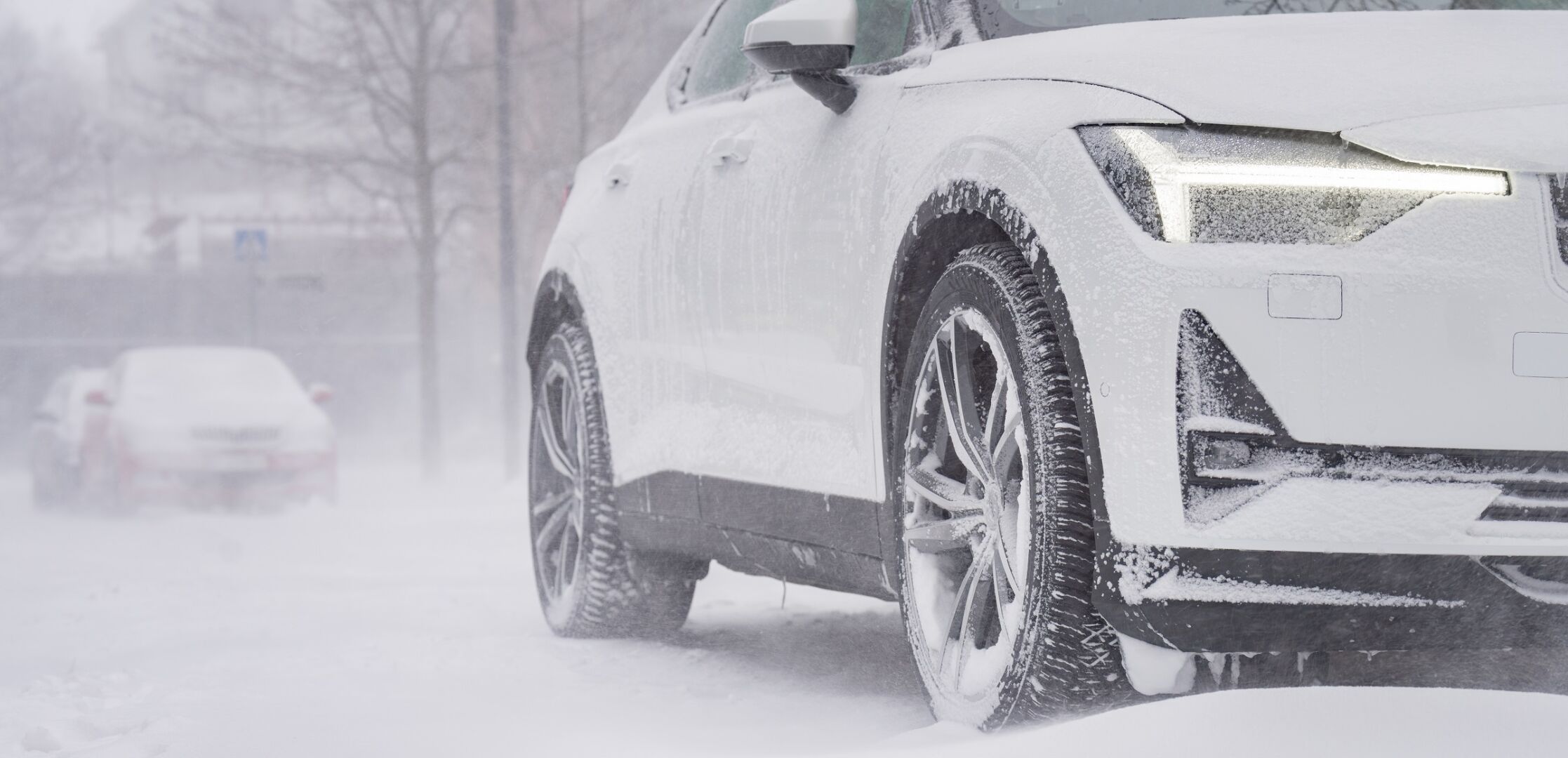
Safety is one of Nokian Tyres' core values. Here are some essential winter driving tips to help you stay safe on the road during the colder months.
Why Winter Tires Matter
Winter weather transforms roads. The term “all season tires” is a misnomer in snowy or icy conditions because they are not rated for winter driving. For peace of mind on wintry roads, choose Nokian Tyres winter tires or all weather tires. Both of these types of tires are winter-rated and certified with the three-peak mountain snowflake symbol.
Our Tire Buying Guide can help you decide which tire type is right for your driving and weather conditions. Always familiarize yourself with local winter driving regulations, such as winter tire laws or tire chain laws. Visit your local Nokian Tyres dealer for expert guidance on choosing the right tires for your driving needs.
Are Your Tires Rated for Winter Driving?
Tire manufacturers embed markings on the tire sidewall that indicate the tire’s rating. To determine whether you have winter-rated tires, look for the three-peak mountain snowflake symbol (3PMSF) on your tires’ sidewalls. This symbol is also sometimes referred to as the "severe service emblem." Tires without the 3PMSF symbol are not recommended for winter driving. This is especially true for most "all-season tires."
You may also see the "M+S" (Mud and Snow) symbol on the sidewall of your tires. M+S tires provide better starting, stopping and driving performance in snowy conditions than non-M+S tires, but they are not interchangeable or comparable to the winter performance that 3PMSF-rated tires provide.

The importance of tire choice
All season tires are designed for temperatures above 45 degrees Fahrenheit (7 degrees Celsius). Their rubber compound and tread pattern perform well in warner conditions but harden in cold weather, losing grip to the road. In contrast, all weather tires and winter tires have softer, more flexible compounds that remain responsive in colder temperatures.

Choosing the Right Tires for Winter Driving
Choosing the right winter tires depends on where you drive, what you drive, and the winter weather your region gets on a regular basis. Visit our Tire Buying Guide to determine what tire type is right for your driving needs.
Winter tires are most often available without studs and can be referred to as non-studded or studless winter tires. Non-studded winter tires are designed to offer exceptional grip on snow and ice.
For added grip and control in icy and extreme winter conditions, studded winter tires (studded tires) can be a good choice. Studs are lightweight, small pieces of metal that are staggered and inserted across the tread of a tire. These studs protrude slightly from the tread surface and help break through packed snow and ice-covered roads to give you better traction.
Studded Tires
Nokian Tyres' Double Stud Technology is designed to provide maximum safety and performance on icy and snowy roads. Double Stud Technology features two types of studs:
-- Center Studs to improve acceleration and braking grip, ensuring that your vehicle can start and stop effectively even on slippery surfaces.
-- Shoulder Studs are positioned on the edges of the tire and are rotated by 180 degrees to maximize grip during turning and lane changes.
This combination ensures Nokian Tyres Hakkapeliitta tires offer excellent handling and stability in the most challenging winter conditions. For maximum effectiveness, all four tires on a vehicle should be studded.
After installing new studded tires, ensure a break-in period where you avoid rapid acceleration, high cornering speeds, and aggressive braking for the first 250 to 300 miles (400 to 500 kilometers).
Read more about choosing between studded and non-studded winter tires here.
Can I Drive Non-Studded Winter Tires Year-Round?
Non-studded winter tires are primarily designed for winter use. They wear out quickly on coarse spring roads and are no match for good all-season tires or all-weather tires in summer. Therefore, we do not recommend using non-studded winter tires year-round. All season tires are the safest and most economical choice for summer driving.
Winter Driving Tips
-- Rotate Your Tires: To avoid uneven tire wear and to prolong tire service life, rotate your tires every 4,000 to 6,000 miles (6,500 to 9,500 km). Check your vehicle owner’s manual for specific instructions.
-- Inspect Tire Wear: Check tire wear monthly - learn how here. Rotate tires at the first sign of irregular wear, even if it occurs before 4,000 miles (6,500 km).
-- Tire Pressure: Adjust tire pressure as needed, especially in winter conditions where higher pressure may be required to account for freezing temperatures. Learn more about winter tire pressures here.
Additional Cold-Weather and Winter Driving Tips
-- Prepare Your Vehicle: Ensure your car’s battery, brakes, lights and heating are in good shape. A full battery is important for those driving an electric vehicle, especially when the electric car’s battery has to endure demanding cold weather.
-- Fill Up the Gas Tank: Keep your tank full for preparedness, and to prevent the fuel line from freezing.
-- Reduce Driving Speed: Increase stopping distance and keep a safe distance from other vehicles, especially in winter conditions.
-- Plan Ahead: Check the weather forecast and your driving route to avoid getting caught in a storm unexpectedly.
-- Clear Your Vehicle of Snow: Remove all excess snow from your vehicle. Keep your car’s windows, lights, roof, mirrors and exhaust pipe free of snow to improve visibility and safety in snowy weather.
-- Drive Carefully: Exercise caution and care, especially when visibility is poor.
-- Avoid Cruise Control: Don't use cruise control on icy roads. Maintain full control of your vehicle on icy roads.
Winter and All-Weather Tires for Demanding Conditions
High-quality winter tires make a significant difference when driving in cold weather or on icy, slushy, and snowy roads. Choose studded or non-studded snow tires for the winter season or all-weather tires for year-round driving. Always check that your tires are rated for winter driving if you know you will be encountering winter conditions with your vehicle. For guidance in choosing the right tires for your vehicle, visit your local Nokian Tyres dealer.
Please remember that it is the driver’s responsibility to ensure their tires are safe and suitable for their vehicle and to follow the vehicle’s manufacturer´s guidelines for proper use and maintenance. Consult your closest Nokian Tyres dealer or your vehicle’s manufacturer for specific advice.


